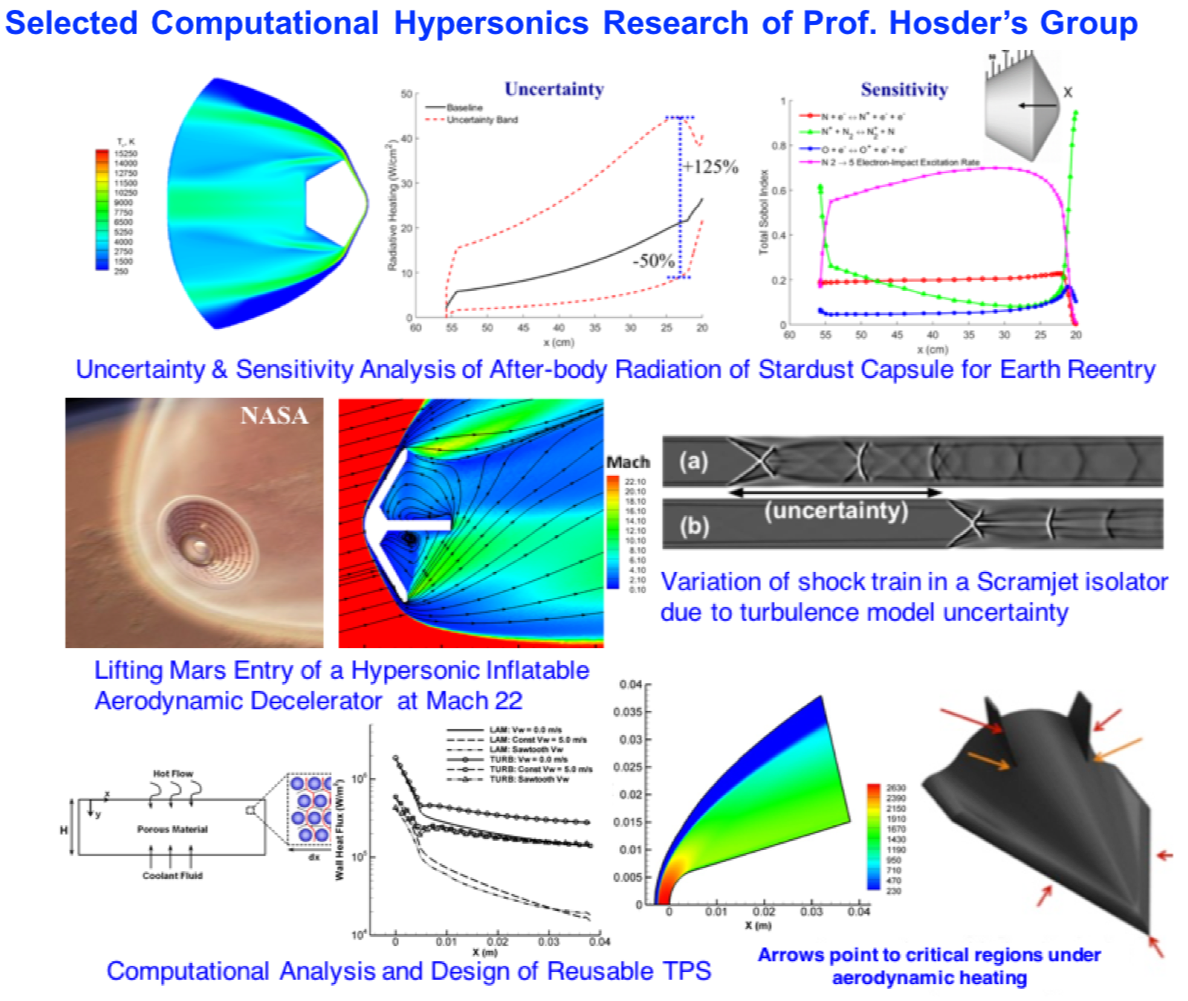Aerospace Engineering
Computational Hypersonics

Computational fluid dynamics for hypersonic flows are used for the simulation of extreme aerothermodynamic environments over hypersonic vehicles, which involves high temperature, high-speed, chemically-reacting, laminar, or turbulent flows with non-equilibrium thermo-chemistry. Due to limited ground and flight test data, hypersonic CFD plays an important role in the analysis, design, uncertainty quantification, and flight qualification of various hypersonic configurations, including re-entry vehicles, atmospheric hypersonic flight systems, and thermal protection systems. High-performance computing is essential for computational hypersonics simulations due to the scale and complexity of the numerical problem. The recent computational hypersonics projects of Prof. Hosder’s research group include (1) uncertainty quantification and multi-fidelity modeling applied to hypersonic flow and aerothermal simulations of rigid and deployable planetary entry systems, hypersonic air-breathing engine flow path analysis, and shock wave-boundary layer interactions; (2) modeling and simulation of particle-laden hypersonic flows including dusty atmospheric environment encountered by spacecraft during Mars entry; and (3) numerical investigation of directed energy radiation for hypersonic applications.
Principle Investigator
Serhat Hosder
Professor
573-341-7239 | hosders@mst.edu |
290B Toomey Hall
Aerodynamics, aerothermodynamics, uncertainty quantification, hypersonic flows and systems, computational fluid dynamics, planetary entry/descent/landing of spacecraft, multidisciplinary analysis and design of aerospace vehicles, robust design, numerical methods.
Computational Plasma Physics

High-performance computing efforts at the Gas and Plasma Dynamics Laboratory (GPDL) cover first-principle-based kinetic modeling of gases and plasmas with space applications, such as electric propulsion and plasma-surface interactions on the Moon and asteroids, gas/plasma modeling of micro-thrusters/cubesats, and scientific computing on massively parallel supercomputers. Ongoing computation-intensive projects led by Dr. Han includes 1) development of massively parallel kinetic modeling tools for aerospace plasma applications; 2) multiscale, multiphysics, and multi-fidelity modeling and simulations of plasma-surface-dust interactions for lunar exploration; 3) development of lab-data-enabled modeling, numerical methods, and validation for 3-D interface inverse problems for plasma-material interactions; 4) multiscale computational modeling of dusty plasmas; and 5) ultrafine particle formation in plasma-assisted combustion.
Principle Investigator
Daoru Han
Assistant Professor
573-341-4337 | handao@mst.edu |
131 Toomey Hall
- Plasma aerospace applications
- Space propulsion
- Plasma-material interactions
- Plasma physics and rarefied gas dynamics
- High-performance computing
